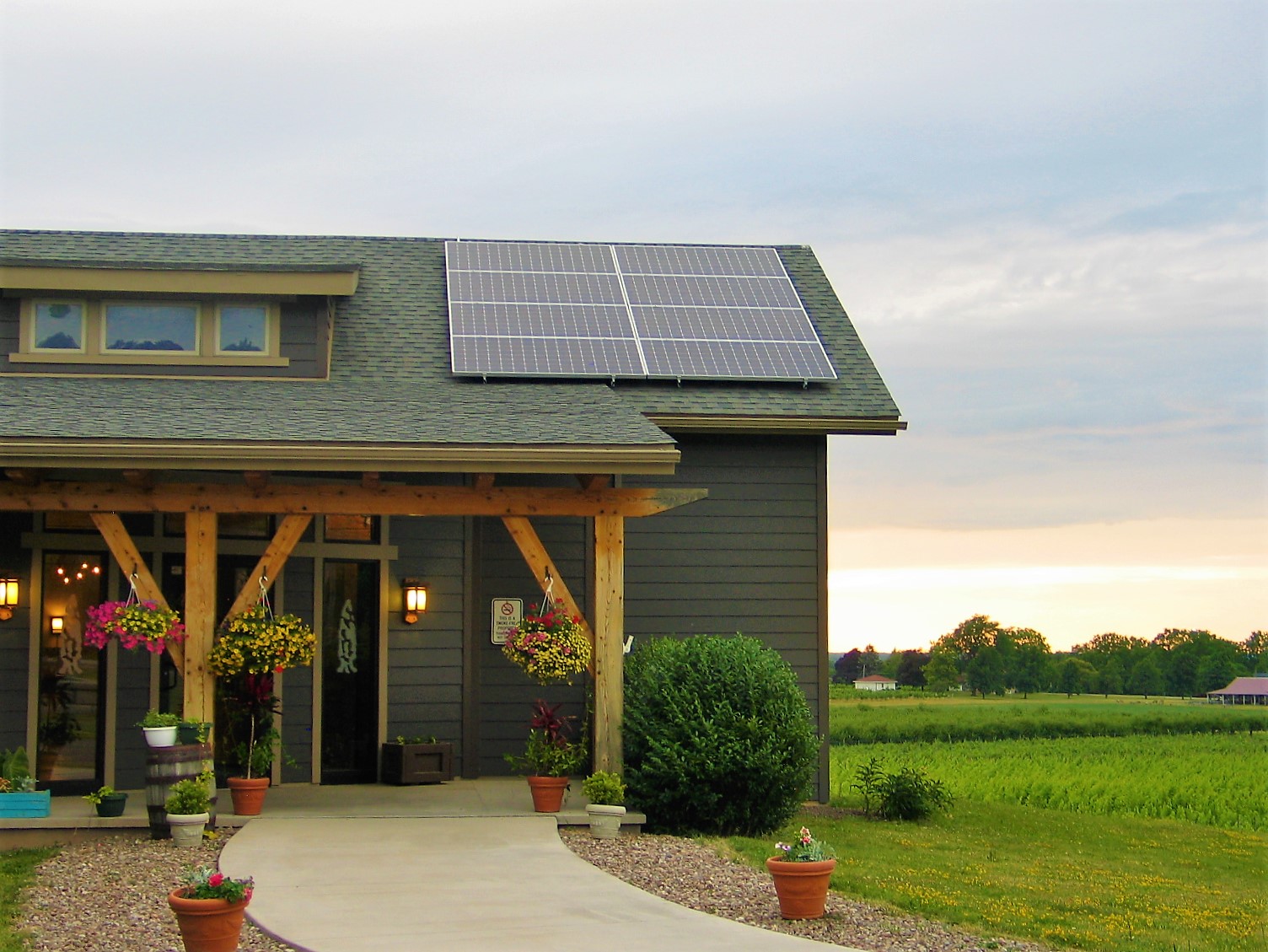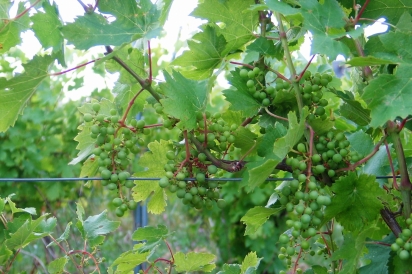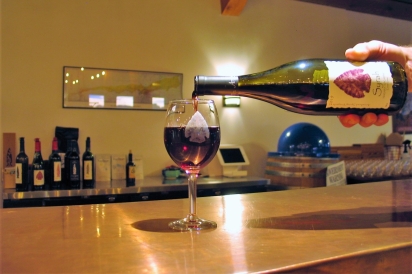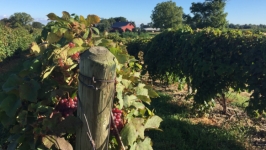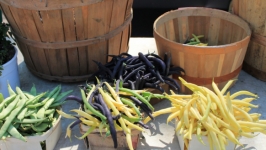Arrowhead Spring Vineyards
When you meet Duncan and Robin Ross, the husband-and-wife co-owners of Arrowhead Spring Vineyards, it’s easy to see how their respect for the environment infuses everything they do. From their power-neutral estate to delicious, sustainably made wines, the vineyards are nothing short of a modern oasis.
“He didn’t tell me this before we got married,” Robin laughs, “but it was always Duncan’s dream to have a winery.”
A kind of life she knew well, coming from a seventh-generation farming family herself.
“I told Duncan that we couldn’t start a winery unless he proved to me that we could make good wine,” she adds. “So he made a bunch of wines, entered the Indiana State Fair Wine & Spirits Competition, and took winemaker of the year. I had to stick to my word.”
They purchased the original 25-acre property in 2003, and another 23 acres since then—a move from Niagara Falls to Lockport that began their second life as winemakers, leaving behind careers in engineering and IT, with the kids in tow. Their son James now oversees the company’s wine sales and tasting room.
Becoming officially certified as a sustainable vineyard in 2022 through VineBalance, a New York Wine & Grape Foundation (NYWGF) pilot program, Arrowhead was one of 35 vineyards statewide to pass 144 sustainable qualifications, including action items for soil health, water protection and energy conservation.
“The program really just came out, but we’ve been farming like this the whole time,” Robin continues. “Finally, there’s a certification that describes it.” They’ll be incorporating the NYWGF sustainable trust mark into their label in the coming year.
The certification is based on the three E’s of holistic winemaking: environmental stewardship, economic viability and social equity. Each vineyard awarded will be reassessed every three years by the state. While they considered other popular certifications, like organic, the Arrowhead Spring team has never wavered on sustainability as their ethos.
“In organic [certification], some of the sprays that are allowed don’t make great sense to me,” Robin explains. “Copper, for example, does a great job on fungus, but it is also a metal that remains in your soil indefinitely.” Copper sulfate, when overused, can ultimately reduce seed germination, plant vigor and iron intake. However, since it’s a natural element, it’s permitted in organic winemaking.
“We’re conservation-minded people,” adds Duncan. “We didn’t want to have a business that was doing damage to the soil or environment.” Arrowhead’s estate also generates most of its own power with solar panels and a 10-kilowatt wind turbine, and makes use of geothermal heating and cooling and LED lighting.
Taking cues from research, the established neighboring wine country in Canada and the terroir of the region (soil, topography and climate), the couple chose to produce grapes that thrive on the Niagara Escarpment’s limestone base: Pinot Noir, Merlot, Cabernet Sauvignon, Cabernet Franc, Syrah and Chardonnay.
With minimal intervention, traditional winemaking methods are employed by the couple and their crew: cluster thinning, leaf removal, shoot thinning as well as balanced pruning throughout the season allow for more sunlight to shine on the grapes. Cover crops and headlands are also grown to avoid soil erosion or runoff in waterways, respectively. The Arrowhead team never sprays herbicides on their grapes and only adds yeast, sugar, egg whites or bentonite clay, along with sulfur as a preservative in their wines.
“We wanted to make wine that was reflective of the terroir here,” adds Duncan. “The more you get into the manipulative components [that allow other varieties to be grown here], the further you get away from what your soil and your climate can produce. And then, for us, why even bother?”
Besides offering notes of blackberry, which grows wild in the region, plus a vibrant acidity from the limestone base, the Niagara Escarpment also benefits from being the second-warmest wine region in New York State (after Long Island). Its season is about two weeks longer than that of the Finger Lakes region, ultimately allowing for more ripening and development of the grapes.
“I think New York still has a reputation from the ’60s and ’70s of making Lambrusco—you know, very sweet wines,” adds Duncan. “Really, the industry has moved very broadly in style.”
He notes some of the beautiful dry wines they are able to create on Arrowhead’s soil.
Among the 185 barrels in production, their wines are aged for up to two years and bottled on-premises in eco-glass, with recyclable tin and cork—an additional choice that is considered sustainable.
“A lot of times people associate heavy glass with better-quality wine,” explains Robin. “It may be a more expensive bottle, but it’s also taking its toll on the environment. It’s using more resources to create it, more resources to ship it—more fuel.”
At the end of the day, they’re here to make quality wines that people can enjoy with deep consideration for the earth.
“These are things that we think about in our winemaking practices. Everything we do. It’s a ripple effect,” adds Robin.


